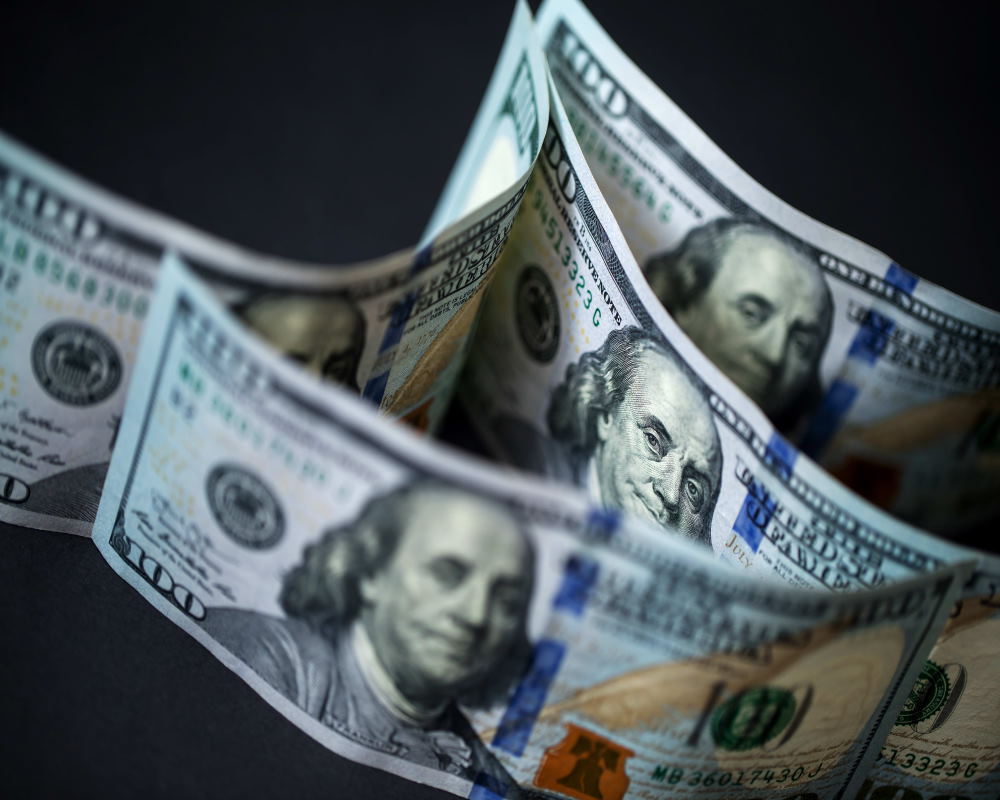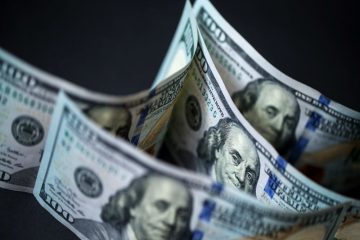Dollar slips as currency traders see inflation spike as temporary

The dollar index edged down on Friday and major currency pairs were stuck within recent ranges as markets shrugged off Thursday’s high U.S. inflation number, believing the Federal Reserve’s stance that it is likely to be a temporary blip.
U.S. consumer prices rose 5% year-on-year in May, the biggest jump in nearly 13 years. Currency markets had been sluggish all week in anticipation of the data, but when it came in above expectations, there was little market reaction.
The Federal Reserve has repeatedly said that it expects any rise in inflation to be temporary and that it is too soon to be discussing reducing its monetary stimulus.
The dollar index edged lower in the Asian session and at 0723 GMT, was down 0.1% on the day at 89.995. It was on track for a small weekly loss of around 0.2%.
Benchmark 10-year U.S. Treasuries actually rallied to a three-month high in the wake of CPI, as short sellers quit bets on rising yields.
“We agree with the Fed that elevated inflation pressures will prove short-lived,” UBS strategists said in a note to clients.
“Both Federal Reserve and European Central Bank policymakers have been unusually consistent in stressing that policy will only need to be tightened if inflation becomes more sustained—which they currently view as unlikely.”
There were signs of slightly increased risk appetite in currency markets, as the Australian dollar was up 0.2% at $0.7768 and the New Zealand dollar was up 0.1% at $0.7204.
But the British pound was steady at $1.41695.
LIQUIDITY GLUT
A dovish stance from the ECB at its meeting on Thursday had little effect on the euro, which was flat on the day at $1.2181 and set for a small weekly gain of around 0.1%.
The ECB said it would continue its emergency bond-buying at a “significantly higher” pace, even as it raised its growth and inflation projections.
A gauge of euro-dollar implied volatility over a six-month horizon was at its lowest since early March 2020, almost back to the levels it was at before the COVID-19 pandemic caused volatility to spike.
“This glut of liquidity is driving volatility levels lower across asset classes and driving the search for carry, including at the long end of yield curves,” wrote ING strategists in a note. In currency trading, “carry” refers to gains from holding higher-yielding currencies.
“This environment should continue to see the dollar gently offered against those currencies with good stories (monetary tightening or commodity exposure) and a little carry,” ING said.
In Russia, the central bank is expected to raise its 5% interest rate by as much as 50 basis points – its third rate rise in a row.
The central bank targets annual consumer inflation of 4%. It climbed above the target in late 2020 amid global inflation and as the weaker rouble filtered into prices.
Elsewhere, Bitcoin recovered slightly while Ether was set for a 10% weekly drop. Both have stabilised so far this month but are still trading significantly below their mid-May peaks.
Attention now turns to the Fed meeting next week. The central bank is likely to announce in August or September a strategy for reducing its massive bond buying program, but won’t start cutting monthly purchases until early next year, a Reuters poll of economists found.
Meanwhile, leaders of the Group of Seven wealthiest economies are meeting in the English seaside resort of Carbis Bay on Friday.

